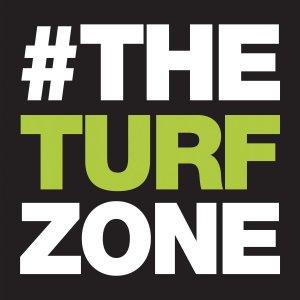The Turf Zone Podcast

Mississippi Turfgrass Association – Ride on Applicators: A Tool for Success?
Mississippi Turfgrass – J. Bryan Unruh, Professor and Associate Director Introduction The use of ride-on applicators in the landscape is common in the northern and transition zones of the United States. However, it has only been in recent years that these machines have made their way south. Ride-on applicator use on warm-season landscapes has been steadily rising over the past few years. In visiting with lawn care operators, the consensus is that the increasing difficulty in finding labor is prompting the shift towards the ride-on applicators. In a leading industry survey, 56% of survey respondents listed labor as a major concern.[i] The challenge is due to the aging workforce and the difficulty in attracting younger workers. A cursory review of Lawn & Landscape Magazine reveals several articles aimed at attracting and retaining young employees. The use of ride-on applicators is seen as a key move to keep younger workers satisfied.[ii] Ride-on applicators also allow for increased productivity since one can spray and spread at the same time. Additionally, ride-on applicators require less manual labor, putting an end to dragging hoses or pushing spreaders. The advantages and disadvantages of the ride-on applicators are listed in Table 1. Types of Ride-on Applicators There are basically two types of ride-on applicators: Spreader only and Spreader/Sprayer. The spreader only applicators are useful for applying granular products such as fertilizer or fertilizer sparged with a pesticide. Examples include the Ferris Rover™ Ride-On Spreader, the Spyker Ride-On Spreader, and the LESCO HPS Chariot Ride-On Spreader. Retail pricing for spreader only models range from $4,600 – $6,775. The Spreader/Sprayer applicators allow for singular or simultaneous application of both dry and liquid products. There are two types of sprayer designs: Boomless and boom-type. The boomless sprayers employ a cluster of FloodJet® type nozzles that distribute the spray solution through a single nozzle operating at a given time. The boom sprayer, as the name implies, has three or four nozzles uniformly spaced along a rigid boom. Examples include the PermaGreen, Ferris Venture™, Z-Spray, and the Turfco T3100 Spreader & Sprayer. Retail pricing for the Spreader/Sprayer systems range from $10,000 – $13,000. Calibrating Ride-on Pesticide Sprayers and Fertilizer Spreaders As with any fertilizer or pesticide application equipment, calibration is critical for achieving effective pest control and providing uniform greening without yellow streaking from fertilizer misapplications. When combining two distribution methods (granular and liquid), the calibration can be quite challenging. Fortunately, Purdue University Extension has a fantastic publication on Calibrating Ride-on Pesticide Sprayers and Fertilizer Spreaders available as a free download (https://ppp.purdue.edu/wp-content/uploads/2016/08/PPP-104.pdf). Do Ride-on Applicators Work as Well as Conventional Equipment? As noted, proper calibration is the first step in achieving success with any application equipment. The application of fertilizer using a ride-on applicator does not differ too much from a standard push spreader. Assuming the machine is operated in the intended manner, one can achieve uniform results. Conversely, the spray delivery systems on ride-on applicators can offer some unique challenges that differ from conventional landscape sprayers – namely the low volume applications and operating the equipment in small, tight areas. Historically, most lawncare spray volumes ranged from 1.0 – 3.0 gallons per 1,000 ft2 [43 – 130 gallons per acre (gpa)] delivered through industry standard spray guns such as the Lesco ChemLawn Spray Gun or the JD9® High Pressure Spray Gun.






 Visit Podcast Website
Visit Podcast Website RSS Podcast Feed
RSS Podcast Feed Subscribe
Subscribe
 Add to MyCast
Add to MyCast